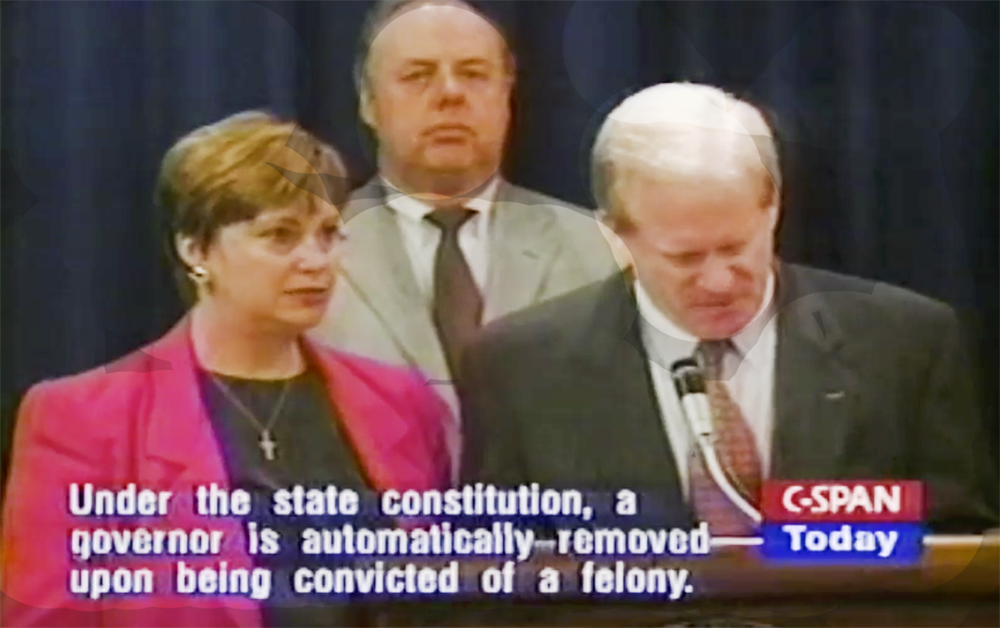Symington announces his resignation with his wife Ann at his side. Also shown is attorney John Dowd.
Opinion: History may not be kind to Fife Symington, but Arizona functioned differently when the governor was done tinkering with state government.
By Robert Nelson\opinion contributor
Arizona Gov. Fife Symington responds to questions following a 1995 appearance in federal bankruptcy court in Phoenix.
Fife Symington was governor of Arizona in 1995, enjoying strong popularity at home while his star rose nationally in Republican circles. A KAET-TV statewide poll at the time put his approval rating at 64%.
He had just been reelected for a second term, though he had spent much of his tenure fending off accusations of financial impropriety. His freshman year had been nearly as gaffe-packed as that of recently impeached Republican Gov. Evan Mecham.
Just two years later, Symington would be less popular than Mecham as he became embroiled in a criminal trial focused on accusations that he lied to creditors and potential lenders about the health of his finances. A majority of Arizona voters wanted him removed from office.
This was the overarching theme of Symington’s nearly two terms. When his policies made more news than personnel issues or personal finances, he commanded unusually broad support.
Once headlines included words like “bankruptcy,” “indictments” or “federal prosecutors” – or the names Esplanade, Mercado, Southwest Savings or George Leckie (his embattled deputy chief of staff) – a large majority of Arizonans, already weary of suffering nationwide ridicule for local scandal and hayseed politics, went very negative very quickly.





